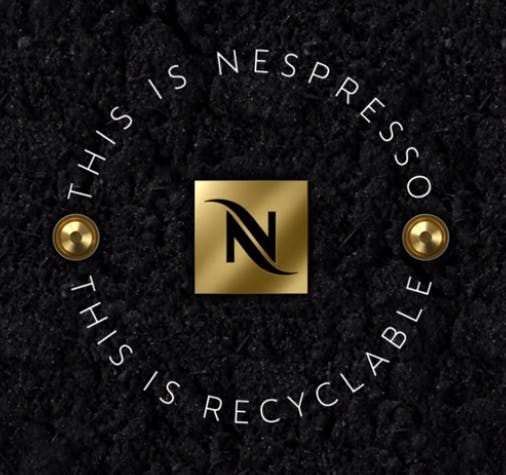Nestlé-owned coffee giant Nespresso, famed for its single-serve, disposable coffee capsules and commercials starring George Clooney, signed a deal in November with metal mining company Rio Tinto to use “responsibly sourced” aluminium.
Both companies joined forces to make all of Nespresso’s aluminium coffee capsules greener by 2020, by manufacturing them with only 100 per cent sustainable aluminium that has been given the ethical seal of approval by the Aluminium Stewardship Initiative (ASI).
Daniel Weston, general counsel and head of Nespresso’s creating shared value group, called this the world’s first responsible aluminium deal.
The iconic disposable capsules will be made from ASI-certified aluminium that has passed independent third-party auditing, covering a range of criteria including reduced greenhouse gas emissions, minimisation of waste effluents, protection of biodiversity, and the upholding of workers’ labour rights.
“For Nespresso, recycling wasn’t enough—it was also important to look at how aluminium was produced in the first place,” said Rio Tinto in a statement.
But Nespresso’s aluminium initiative raises the question: why is the company using mined aluminium to produce coffee capsules when 100 per cent recycled aluminium is the truly sustainable option?
“
It is a hard-nosed business decision. For circular model paths, Nespresso needs to partner with other companies along the whole supply and value chains, [all of which] require more resources and different skillsets on the part of Nespresso.
Professor Seeram Ramakrishna, chair, Circular Economy Taskforce, National University of Singapore.
Aluminium is one of the most environmentally-friendly packaging materials—the lightweight metal can be recycled an infinite number of times without any loss of quality; three-quarters of all aluminium ever smelted remains in use. The ease and profitability of recycling aluminium is so great—aluminium can scrap is worth US$1,186 per ton—that the aluminium recycling industry is expected to hit a market size of around US$434 billion by 2023.
Furthermore, the environmental toll of recycled aluminium is only a fraction of producing new aluminium—the former consumes 92 per cent less energy and belches 95 per cent less carbon emissions than the latter.
Coffee capsule crisis
While recycling aluminium should be the logical—and greener—step forward for Nespresso, coffee capsules are notoriously hard to recycle.
Made of a mixture of plastic and other materials, coffee pods are so small that most recycling facilities are unable to process them. Most end up in landfills, where they take 150–500 years to break down.
While Nespresso runs a global recycling programme in 44 countries for its coffee capsules, customers in Singapore can only drop them off at limited collection points, or with the courier who delivers their next order of coffee.

Nespresso’s bold declaration on their coffee capsules: “This is recyclable”. So why aren’t they recycled? Image: Nespresso
In response to an enquiry from Eco-Business, Nespresso claimed that one in four of their capsules are recycled globally. Its website also indicates that their coffee capsules are “infinitely recyclable”.
However, Nespresso said that only 13 per cent of its Vertuo range capsules were made using recycled aluminium. Despite enquiries, the company failed to mention whether the other two ranges of capsules, Original and Nespresso Professional Range, use recycled aluminium too.
When asked why the firm is not using recycled aluminium to manufacture their capsules, Nespresso claimed their capsules require a “specific alloy of aluminium”—alloy 8011 that is not found in recycled aluminium and one of the only sources are recycled Nespresso capsules.
But Professor Seeram Ramakrishna, chair of the Circular Economy Taskforce at the National University of Singapore, disagrees that the alloy is not as rare as Nespresso claims. Aluminium alloy 8011 is a “malleable wrought alloy”, which can be “supplied by other companies too”, he said.
“It is a hard-nosed business decision,” said Ramakrishna on Nespresso’s decision to choose mined aluminium over recycled aluminium. He elaborated that it takes much effort on the part of companies to adopt a business model fully in line with the circular economy, which is where all materials used in production are reused or restored to decrease the need for virgin material.
Choosing responsibly sourced aluminium might be easier for Nespresso than using 100 per cent recycled aluminium. “For circular model paths, Nespresso needs to partner with other companies along the whole supply and value chain, [all of which] require more resources and different skillsets,” he said.
Although more companies are starting to adopt the circular economy approach—sportswear giant Adidas recycled ocean plastics to manufacture shoes, and tech company Dell harvests gold from the motherboards of end-of-life Dell computers to create a new line of jewellery—the circular economy model should not be confused with increased recycling.
“A fully circular model means zero waste generation over the entire life cycle of the products while embracing renewable energies for all intermediary steps in the entire supply chain,” said Ramakrishna. “Increased recycling is only a simplified partial solution when compared to the circular model.”

















